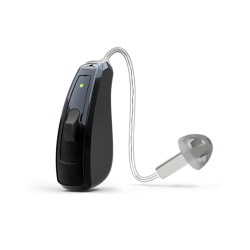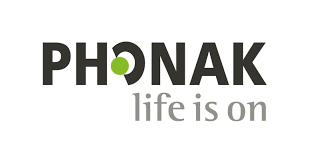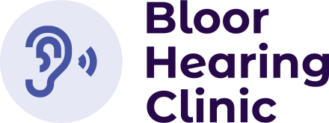Hearing aid types

Over the ear
The subtypes are
1. Receiver in the ear (RIC): to minimize the size of the hearing aid, the speaker is at the end of a thin electrical wire connected to the case.
They are smaller in size and more discrete, speaker is closer to ear drum and may offer clearer sound quality.
2. Behind the ear (BTE): the speaker is inside the hard case along with the other electronic components. These have stronger amplification power suitable for profound hearing loss. Larger size easier to use for those with dexterity concern. Moisture and wax in ear canal will not affect hearing aid parts.

In the ear
1. Custom molds can come in several sizes, depending on the user’s ear canal space and dexterity. A larger shell is needed for patients with dexterity concerns.
2. Ready fit uses “click domes”, which come in different sizes for different ear canals. These are easy to use, and saves wait time on making of custom mold.
Some of the Hearing aid brands we dispense





FAQ
Different hearing aids are popular for different reasons. In the ear (ITE) hearing aids fit inside the ears and are convenient for those who wear glasses and masks. They come in different sizes to accommodate different hearing level and hand dexterity concerns. For the technology savvy, behind the ear hearing aids (a small piece that fits behind the ear, with wire that goes inside the ear canal) provide more connectivity options such as Bluetooth streaming from your smart phone.
Hearing aids are generally pretty comfortable given the recent technology development and shrinkage is size. In the ear (ITE) hearing aids are popular for those who wear glasses and have hand dexterity challenges, while behind-the-ear hearing aids have less of a “blocked” sensation of the ear canal. It really is a personal preference.
| Hearing Test (Over 60) | Free |
| Hearing Test (Under 60) | $90 |
| Pediatric Hearing Test (Under 18) | $110 |
| Industrial Hearing Test (i.e. Toronto Police) | $125 |
| Ear Wax removal | $95 |
| Office Visit | $45 |
| Tinnitus consultation | $90 |
| Custom Ear plugs (sleep, noise, musician) | $270-$375 |
Hearing aid prices depend on the type of hearing aids a patient chooses after a complete hearing test and assessment. They range from $2800-$5500* per pair. The price of the hearing aid also includes 3 years manufacture warranty, 2 years loss and damage warranty, and lifetime in clinic services. Chat with us to learn about our offerings.
*After ADP government funding
Older population have specific concerns regarding vision and dexterity. In these cases we prescribe in-the-ear hearing aids so it is easier to grab and insert.
We recommend a technology level and manufacturer/brand that fits user’s lifestyle and budget. Is the user a first-time user of hearing aids? Do they prefer to have more environmental awareness? Does the user like to use streaming to listen to TV or music? These are only some of the many questions our audiologist explore with the client when prescribing hearing aids.
Our clinic works with all manufacturers. We are independent and not corporate/manufacture owned. Our clients enjoy many options and are fitted with the most suitable hearing aids.
OHIP covers hearing aids to some extend. The Assistive Device Program (ADP) covers up to $1000 ($500 per ear) every 3-5 years. Bloor hearing clinic will handle all application paperwork for patients to access funding so patients do not need to pay this amount when purchasing the hearing aids. We will work with you to find the best suited hearing aids for your lifestyle and budget, and offer flexible payment plans.
It depends. In the ear hearing aids are more inconspicuous and easier to insert, which over the ear hearing aids offer a less “plugged” feeling to some. The best way to find out is to come in for a hearing aid demo and experience it in real life which one you prefer.
Any loss could potentially benefit from hearing aids. Typically a mild loss (worse than 25dB HL hearing threshold) can cause trouble with hearing speech in a noisy environment. The best way to know is to receive a comprehensive hearing test.
It is not recommended to wear only 1 hearing aid. You need two hearing aids to have proper sound localization.
